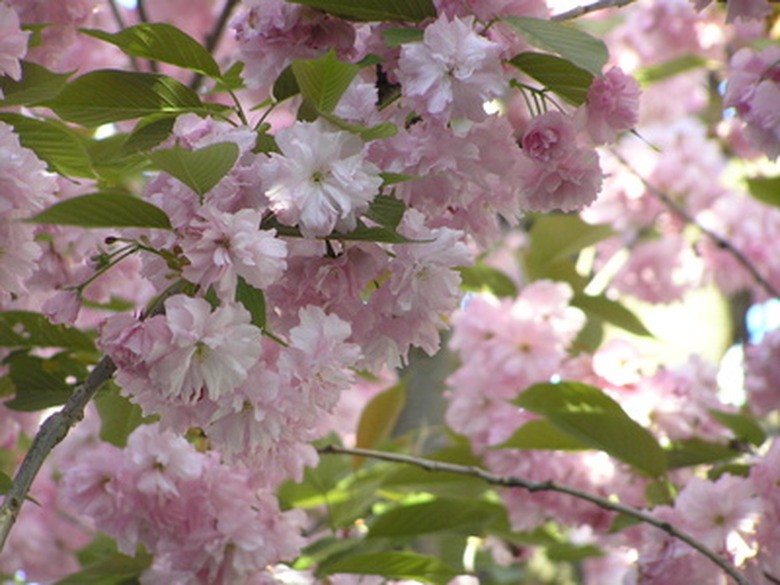How To Prune A Weeping Cherry Blossom Tree
We may receive a commission on purchases made from links.
Graceful in form and lovely in bloom, a weeping Higan cherry blossom tree (Prunus × subhirtella 'Pendula') bears flowers on bare branches early in spring before the leaves emerge. Typically used in landscape design as a specimen tree, weeping cherry may lose its aesthetic appeal if left unpruned. But unlike some other landscape plants that require intensive pruning, weeping cherry only needs a few snips here and there once a year to maintain its pendulous shape.
Tip
As a perennial in U.S. Department of Agriculture plant hardiness zones 5 through 8, weeping cherry is a grafted tree. The weeping part at the top of this cherry tree is actually grafted onto another cherry species, typically bird cherry (Prunus avium, USDA zones 3 through 8). Because of this graft union, weeping cherry continues to maintain its pendulous shape at the top while benefiting from the stronger and more disease-resistant rootstock at its base.
Pruning to Remove Suckers
Pruning to Remove Suckers
The graft union, which appears as a knot or bump on the trunk, is located higher on the trunk of a weeping cherry tree than the graft unions on many other types of plants, which are nearer ground level. Generally, you'll find the graft union on a weeping cherry 4 to 5 feet above the soil level. The reason it's important to identify this spot on your plant is because one type of pruning involves removing any growth that sprouts below the grafted area. This growth includes any stems that grow from the main trunk below the graft union or from the roots.
The stems that sprout from the roots, also called suckers, not only detract from weeping cherry's single-trunked growth habit, but also fail to create a weeping form if left to mature. This growth is representative of the rootstock plant, which has upright growth. When you start to see these sucker stems on your weeping cherry tree, it's time to prune. Here's how:
- Cut any suckers that sprout
to the ground using handheld pruning shears or long-handled lopping pruners. - Before making any cuts,
sanitize the blades by wiping them with 70 percent alcohol or ethanol to help
prevent any potential diseases from invading the cut surfaces.
Pruning to Thin the Crown
Pruning to Thin the Crown
The crown of a weeping cherry, which is the mass of cascading branches at the top of the tree, may have a tendency to become thick and tangled as the plant matures. This heavy top-growth can place too much weight on the single trunk, particularly on windy days or during wintry periods that bring a buildup of snow or ice on the branches. When you see the crown of your weeping cherry tree getting too heavy, it's time to prune.
The best time of year for this type of pruning is when the weeping cherry is dormant — during late fall or winter — when there are no leaves on the tree. Here's how:
- First, trim any branches that are dragging the ground. You
may want to trim them at least 24 inches off the ground to keep the tree
looking tidy and to clear plenty of room for air to circulate beneath the tree. - To help maintain the tree's weeping form and loosen the interior,
prune back any branches that are growing straight up, and then remove any
growth that crosses or rubs against other branches. - As a rule of thumb, make
sure the remaining branches are spaced about 2 inches apart. This helps keep
them from rubbing against each other, which can injure the tree, and it also
allows air to circulate throughout the canopy, which helps prevent disease.
